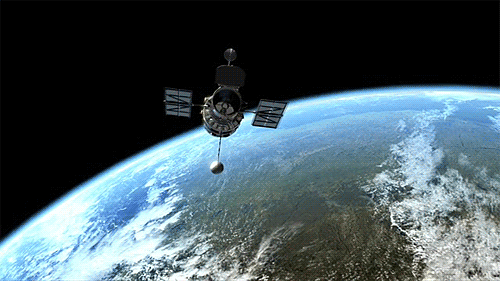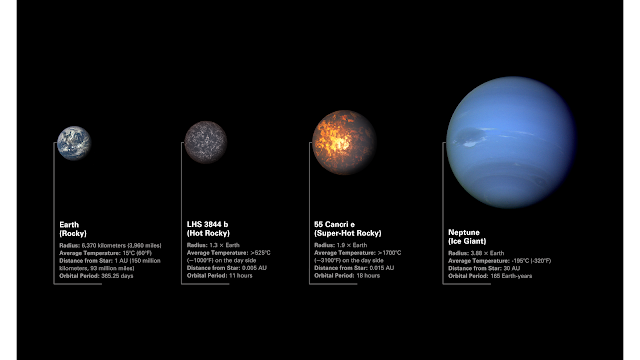ISS - Expedition 67 Mission patch.
May 27, 2022
Crew members aboard the International Space Station conducted scientific investigations during the week of May 23 that included a program running student-designed software to control robots, examining how alloys solidify in microgravity, and a study of quantum gas bubbles.
Here are details on some of the microgravity investigations currently taking place on the orbiting lab:
Astrobee, point!
Image above: ESA astronaut Samantha Cristoforetti monitors a pair of Astrobee robots as they perform autonomous programmed maneuvers. For JAXA’s Robo-Pro Challenge 3, students create software programs to direct the free-flyers to find and identify a target. Image Credit: NASA.
Robo-Pro Challenge 3 is an educational program from the Japan Aerospace Exploration Agency (JAXA) that challenges students to direct the free-flying Astrobee robots to move through a series of locations to find a target. The students create software and use an image processing algorithm, Astrobee’s onboard camera and laser pointer to accomplish their mission. Robo-Pro Challenge 3 aims to inspire the next generation of scientists, engineers, and leaders and encourage pursuit of careers in science, technology, engineering, and mathematics. During the week, crew members set up Astrobees for the program and stowed them after its completion.
Boiling and solidifying
Animation above: NASA astronaut Jessica Watkins sets up hardware for DECLIC DSI-R, which studies how alloys solidify in microgravity. Results could shed light on the formation of solid materials and help improve manufacturing processes that make products by melting and solidifying materials. Animation Credit: NASA.
DECLIC (Device for the Study of Critical Liquids and Crystallization), a multi-user facility developed by the French Space Agency (CNES), supports fluid physics and materials science experiments. DECLIC DSI-R uses succinonitrile, an organic substance that is transparent in its liquid state, to study how alloys solidify in microgravity. Results could shed light on the physics that control formation of solid materials by providing real-time views of the crystal structures that form in the liquid. This research may help improve manufacturing processes that melt and solidify materials to make products on the ground. Crew members prepared the hardware for experiment runs during the week.
Now that’s cold
Image above: The station’s Cold Atom Lab (CAL), shown here, creates ultracold clouds of atoms, rendering them nearly immobile so that scientists can examine them closely. CAL - Bose-Einstein Condensate Bubble Dynamics creates a quantum gas known as a Bose-Einstein Condensate (BEC) to gain insight into its behavior for next-generation research and design. NASA’s Jet Propulsion Laboratory calls CAL “the coolest experiment in the Universe.” Image Credit: NASA.
Cold Atom Lab - Bose-Einstein Condensate Bubble Dynamics creates a quantum gas known as a Bose-Einstein Condensate (BEC) confined in a spherical structure or bubble and examines the behavior of these bubbles. The space station’s CAL facility makes it possible to study BEC physics in ways not possible in Earth’s gravity. This investigation could provide insight into fundamental quantum mechanics, supporting future research and development and design of next-generation quantum sensors and simulators. Operations take place during the crew sleep period to minimize disturbances to the hardware. Researchers monitor science operations and crew members conduct a quick check of data each day to ensure performance.
Other investigations involving the crew:
- Standard Measures collects data on behavioral and physical health and performance. Scientists use these data to characterize how crew members adapt to living and working in space, monitor countermeasure effectiveness, and support future research on planetary missions.
https://www.nasa.gov/mission_pages/station/research/experiments/explorer/Investigation.html?#id=7711
- XROOTS uses hydroponic (liquid-based) and aeroponic (air-based) techniques to grow plants without traditional growth media, potentially enabling production of crops on a larger scale for future space exploration.
https://www.nasa.gov/mission_pages/station/research/experiments/explorer/Investigation.html?#id=8088
- Cerebral Autoregulation, an investigation from JAXA, tests how microgravity affects the brain’s ability to self-regulate blood flow. After returning to Earth, many astronauts experience lightheadedness, which could affect safety and performance on future missions that land on the Moon or other planets.
https://humans-in-space.jaxa.jp/en/biz-lab/experiment/theme/detail/000914.html
- Vascular Aging, a Canadian Space Agency (CSA) investigation, collects data on vascular changes in astronauts, which could pose health risks on future long-duration space missions. Results could support development of ways to reduce the potential risks to astronauts and guide prevention measures and treatments for similar effects of aging on Earth.
https://www.nasa.gov/mission_pages/station/research/experiments/explorer/Investigation.html?#id=7644
- Students across Europe use two augmented Raspberry Pi computers aboard the space station for AstroPi, an education program coordinated by ESA. The program helps motivate students to study science, technology, engineering, and mathematics.
https://www.nasa.gov/mission_pages/station/research/experiments/explorer/Investigation.html?#id=7534
Space to Ground: Starliner: 05/27/2022
Related links:
Expedition 67: https://www.nasa.gov/mission_pages/station/expeditions/expedition67/index.html
Robo-Pro Challenge 3: https://www.nasa.gov/mission_pages/station/research/experiments/explorer/Investigation.html?#id=8705
Astrobee: https://www.nasa.gov/mission_pages/station/research/experiments/explorer/Facility.html?#id=1891
DECLIC (Device for the Study of Critical Liquids and Crystallization): https://www.nasa.gov/mission_pages/station/research/experiments/explorer/Facility.html?#id=7351
DECLIC DSI-R: https://www.nasa.gov/mission_pages/station/research/experiments/explorer/Investigation.html?#id=196
Cold Atom Lab - Bose-Einstein Condensate Bubble Dynamics: https://www.nasa.gov/mission_pages/station/research/experiments/explorer/Investigation.html?#id=8290
CAL: https://www.nasa.gov/mission_pages/station/research/experiments/explorer/Facility.html?#id=7396
ISS National Lab: https://www.issnationallab.org/
Spot the Station: https://spotthestation.nasa.gov/
Space Station Research and Technology: https://www.nasa.gov/mission_pages/station/research/overview.html
International Space Station (ISS): https://www.nasa.gov/mission_pages/station/main/index.html
Animation (mentioned), Image (mentioned), Video (NASA), Text, Credits: NASA/Ana Guzman/John Love, ISS Research Planning Integration Scientist Expedition 67.
Best regards, Orbiter.ch











































